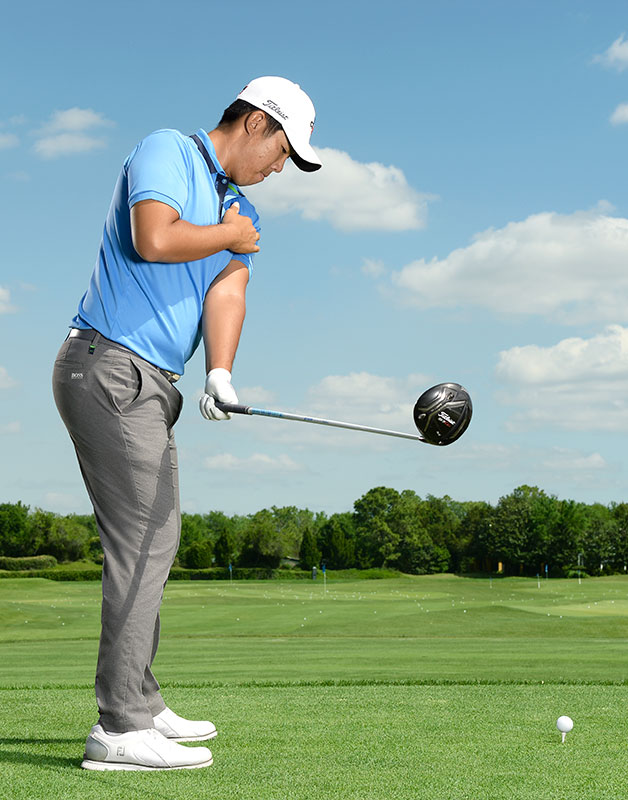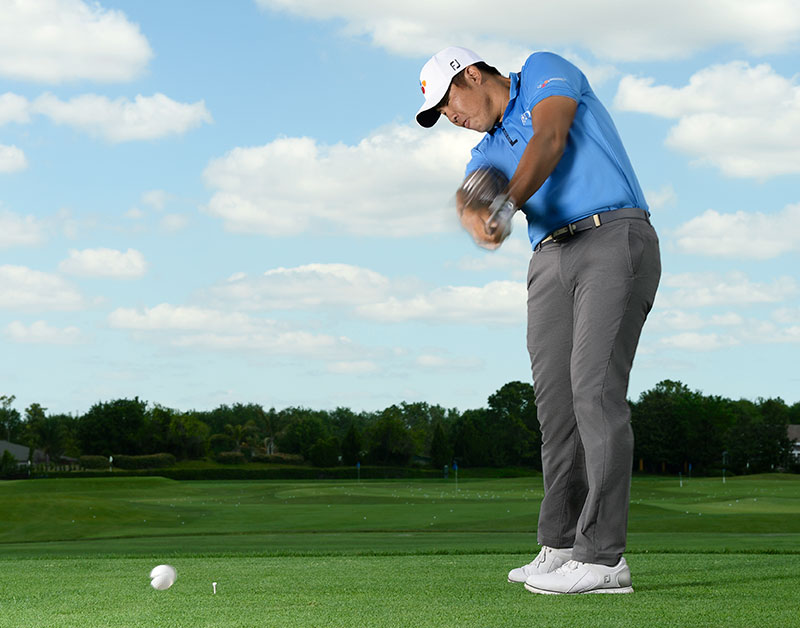There’s a stat on the pga tour – strokes gained/off the tee – that indicates how much of an advantage a golfer gets from driving when compared to other golfers. If you look at the names at the top of the strokes-gained list – Dustin Johnson, Jon Rahm, Francesco Molinari, Tommy Fleetwood, Rory McIlroy – you start to realise how valuable good tee shots are to your success.
Me? I finished the 2017-2018 season 24th on that list, and my work with the driver helped me put together my best season as a pro, nearly winning the Memorial and RBC Canadian Open. My focus with the driver has been to improve sequencing and technique – fundamental stuff – and there’s no doubt what I worked on can help you, too.
Read on for the details.
– with Ron Kaspriske
 Get Off To A Good Start
Get Off To A Good Start
Many golfers, including me sometimes, start their backswing with a poor turn. The mistake is a flat takeaway where the shoulders rotate level with the ground. Your lead shoulder should move away from the target but also downward as the hands stay close to the body. Everything should move together and in sync, which helps keep the club in a slightly more vertical position going back. This gives you room to shallow the club into a great hitting position on the way down. A flat turn prompts the opposite. The shallow backswing makes you want to swing down more steeply and cut across the ball – the slice move.
A drill I use to reinforce a good move off the ball is to pin the upper portion of my left arm against my body, keep it there with my right hand, and then make a one-armed backswing [above]. This feeling of a connected takeway, with the left shoulder dropping, will set the tone for your new-and-improved driver swing.
Let It End Naturally
Some golfers don’t load up and end their backswing too early. Others keep their hands and club swinging back after the body stops winding. Either will lead to inconsistency.
The backswing should end when your upper body feels like it can’t coil any farther against a stable lower body. This feeling of coil is best achieved by letting the trail arm (right for right-handers) stay on top of the left for as long as it can in the backswing [above]. This helps maintain good swing width – important for solid contact and power – and deters you from taking the club back too far.

Sync The Through-Swing
Once the backswing ends, what comes next happens in a flash, so it’s hard to be conscious of controlling body movement. But if you can get your through-swing to happen in the right sequence of motion, you’ll hit your best drives. The order: rotate the lower body towards the target, follow with the upper body, and then finally let the arms and club swing past the body through impact. A lot of this will happen naturally if you learn how to get the lower body moving first. I start with a bump of my hips towards the target, which initiates my lower-body rotation. It’s a bump, then turn. Do that, and your upper body, arms and club will get pulled along. Don’t think about hitting the ball with your arms. It’s easier to control the shot with body rotation. The secret is making an efficient backswing and a synchronised downswing. Keeping it simple will help you hit it in the centre of the face more often. That’s what really matters.





